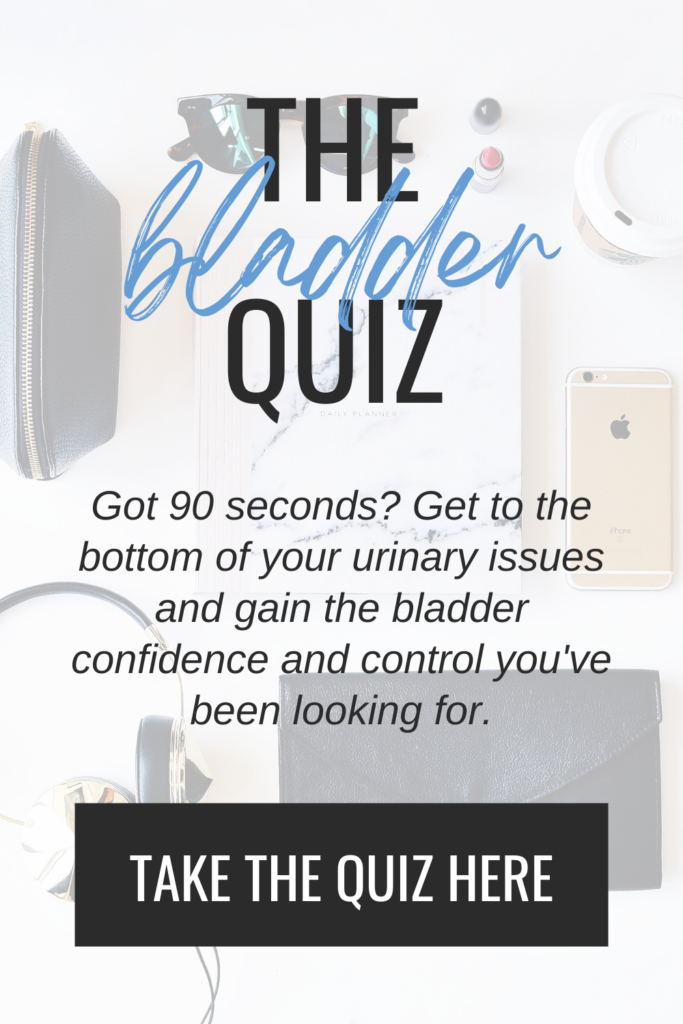Conversations with friends, social media DM’s, patient questions, email replies…these are a few of my favorite things and where I get inspo for the posts you see weekly(ish) here on the Make + Manifest blog. So when I found myself talking about and nerding out over menstrual cycle tracking in allllllllll the places, I knew this resource HAD to be made.
The menstrual cycle is now considered the sixth vital sign (#praise) – aka less of a taboo topic and more an aspect of women’s wellness that needs to be calculated and considered to regularly assess and effect overall health. From cycle length to cravings to cervical mucus (yes…we’re going there!), knowledge is power, and there’s nothing more helpful & encouraging & satisfying & resourceful & empowering than knowing your body on [this] level.
In a world where we’re bombarded with wellness trends, fitness fads, and the next best diet, the menstrual cycle often takes a back seat in the “health” conversation. But it deserves a little more airtime because it’s not just about family planning or predicting your period’s arrival. It’s about embracing the ebb and…um…flow of the female body, recognizing the subtle signs it sends, and using that awareness to optimize your overall wellbeing.
Whether your period is like clockwork every month, sporadic & unpredictable, or currently non-existent for whatever reason, I can almost guarantee there’s a worthwhile nugget of wisdom in here for ya… girl scout’s honor.
The menstrual cycle metrics worth tracking
Because hormones drive the menstrual cycle aaaaaaaand nearly every other bodily function, there are dozens of aspects and side effects of the menstrual cycle you could track – bowel movement changes, skin & hair variations, pain locations & levels, sex drive, sleep fluctuations. But if you’re a busy gal like me and only want to put your effort into things that matter and move the needle, the following menstrual cycle metrics are the ones I consider to be the most important and informative.
DURATION OF YOUR PERIOD
Your period duration is the amount of time from the first to last spot of blood. The average length is anywhere from two to seven days with “normal” being the number in or near that range that’s consistent for YOU (and you’ll only know your normal by tracking this regularly, month in and month out.) Using a calendar, planner, or smartphone app, note the first and last day of your bleed, then count the days to calculate your period duration.
LENGTH OF MENSTRUAL CYCLE
On top of period duration, it’s also important to measure the length of your entire menstrual cycle – menstruation, follicular phase, ovulation, and luteal phase. This is the number of days from the first day of your period to the first day of your next period. The average is 25-35 days with your “normal” being the regular length of time that falls in or near that range. You can track this number using a calendar, planner, or smartphone app.
BASAL BODY TEMPERATURE
Out of all the menstrual cycle metrics, basal body temperature (BBT) is my favorite thing to track. BBT is your temperature at rest and is measured by taking your oral temperature with a thermometer first thing in the morning before getting out of bed. With practice and consistency, this number and how it fluctuates can tell you what menstrual cycle phase you’re in, when you’re ovulating, and when your period will start.
BBT tends to follow progesterone levels and is typically lower during menstruation and the follicular phase then rises a few days after ovulation. It overall stays higher during the luteal phase, then drops again for menstruation. Temperature changes are usually only by a few tenths of a degree, so this pattern is easiest to see on a line graph, which many apps have or you can create on graph paper.
CERVICAL FLUID
Cervical fluid…cervical mucus…vaginal discharge…I don’t care what you call it, it can tell you a lot about your menstrual cycle. Depending on where you are in your cycle, cervical fluid changes to ultimately prevent or promote pregnancy and can help you track your current phase. Simply note the color & consistency of your discharge (or the lack thereof) on your underwear or on toilet paper when wiping after urinating.
During menstruation there may be cervical fluid present, but most women only notice blood. Once your period is done, vaginal discharge transitions to a white, creamy, sticky substance, then during ovulation it’s clear, slick, slippery, and stretchy like egg whites. Once ovulation is over, there’s typically a week or two of dryness before the menstrual cycle starts again.
HOW YOU FEEL
If you find your mood & motivation & energy & productivity & concentration & capacity fluctuate through the month, it’s not all in your head. Estrogen controls all of the above, and as it rises and falls (and rises and falls) with the menstrual cycle, so does how you feel. While everyone’s “normal” is different, it’s common to feel your best right before and during ovulation and about a week before your period (when estrogen is higher), then not as great during your period and immediately after ovulation (when estrogen is lower). Tracking your mood every day of your cycle in a smartphone app or notebook every month will eventually reveal trends and bring light to why some days are better than others.
My favorite menstrual cycle tracking tools
Ok…I’ve referenced “apps” and “planners” and “calendars” throughout this post, and now that you’re convinced you NEEEEEEEED to be tracking these menstrual cycle metrics, let’s get you doin’ it with ease. I highly doubt tracking your menstrual cycle makes the top ten of most important things on your to-do list, and the enthusiasm will be *very* short-lived if it’s not accessible and overall effortless. Enter my favorite efficient and effective tools out there to make this a simple & sustainable practice you can’t help but embrace.
MY FAVORITE (FREE) APP
There are hundreds (give or take) or free smartphone apps for tracking menstrual cycle metrics, and after trying almost a dozen, I fell in love with Kindara and have been using it for the past five years. While there’s a paid option that unlocks even more goodness, I’ve been able to successfully track alllllllll the important things (aka — everything in that list above) with the free version.
RELATED POST: 13 Smartphone Apps Every [Health-Conscious] Woman Needs on Her Home Screen
Every day before rolling out of bed I take my BBT with this quiet backlight thermometer (perfect for early morning temperature checks), then manually input it into the app. I note when I’m bleeding and the amount, my mood for the day, cervical fluid, and the app calculates the rest – menstruation length, cycle duration, and their average, predicted ovulation, and expected start of the next menstrual cycle.
There are so many things my brain loves about Kindara, but my favorite is that it shows each cycle’s BBT on a line graph so you can visualize temperature rise and fall and correlate temperature changes with cycle phases and other metrics like mood and cervical fluid. I’ve been doing this long enough that I can now predict my ovulatory phase and upcoming period to the day, which has so many benefits.



ALL-IN-ONE (PAID) APPS
Since the Kindara app works so well for me (and did I mention it’s free!?), I’ve never felt the need to use anything else, but there are fancier “all-in-one” options available that I want you to be aware of. If you’re someone who’s willing to pay for convenience (or has an insurance plan that will reimburse you), then more power to ya…you’re gonna love these!
Natural Cycles – This app syncs to the apple watch, oura ring, or NC Thermometer via Bluetooth. The app uses BBT and other metrics tracked by each device to predict fertility and menstruation. You can also input further information about cervical mucus and mood and even utilize ovulation test strips. This app is $99/year or $79.99/six months and comes with a free Bluetooth thermometer.
Daysy – This app syncs to a specific thermometer via Bluetooth. The app uses BBT and cycle averages to predict fertility and menstruation. You can also input information about cervical mucus. This thermometer/app duo is a one-time payment of $319.
GOOD OL’ PEN-TO-PAPER
If you’re trying to be off your phone as much as possible, are concerned about data privacy, or just like the idea of putting pen to paper and intentionally tracking your menstrual cycle metrics, then this just may be the option for you. The May Designs Classic Notebook with “Months & Dots Grid” pages is perfect for this as the front of the notebook contains a year’s worth of monthly calendars to note period length, cycle length, cervical mucus, and mood. And while it will take a little effort to map out your graph, the dot grid pages that follow can be used to track and visualize your BBT fluctuations.
Alllllllll the reasons tracking your menstrual cycle metrics matters
I get it…periods can be painful (literally and figuratively), and if you’re a busy and ambitious gal like me, you might be wondering why these menstrual cycle metrics deserve your time and attention. Many assume it’s all about avoiding or attempting pregnancy, and while it can be…there’s also so much more. The benefits of tracking your cycle go soooooo much deeper – physically, mentally, & emotionally – and you can experience many of these positives even if your cycle is irregular or non-existent.
Know your normal. The range of menstrual cycle norms is wide, so knowing YOUR average period duration, cycle length, BBT activity, etc. is what matters most. Having this data regularly available (which is ~beyond~ easy to access in the Kindara app, btw) allows you to reflect on normal monthly patterns and easily recognize when something changes.
Predict & plan & prepare for your period. I don’t know about you, but life looks a little different when I’m on my period. From a comfier wardrobe to packing menstrual care products, those five days of the month require a little extra TLC. Knowing my average cycle length and BBT patterns allow me to successfully predict my period to the day, making this time of the month so much less stressful.
RELATED POST: The Menstrual Cup Guide You’ve Been Looking For
Ultimate hormone hack. The menstrual cycle has four hormonal phases, each of which includes benefits we should be taking advantage of. Awareness of your menstrual cycle metrics informs you of your current cycle phase, then allows you to support your hormones, eat & sleep & exercise & work smarter not harder, and simply feel better living in harmony and alignment with your cycle…the ultimate health hack. “In the Flo” by Alisa Vitti is my favorite resource to learn more about this topic.
RELATED POST: You’ve Gotta Read at Least One of [THESE] 5 Books If You Want a Better Menstrual Cycle
Natural family planning. If you’re trying to plan or prevent pregnancy naturally, you need to know your fertility window. For most women, this is the three to five days leading up to ovulation, the day of ovulation, and the day after ovulation. While many apps will attempt to predict this window for you, mindfulness of your BBT and cervical mucus patterns is the most reliable way to determine this and how I successfully conceived my daughter nearly four year ago and have avoided pregnancy since.
Body confidence. This is so much more than the size on the tag of your jeans or number on the scale. It’s intuition. It’s anticipating & understanding your body’s rhythms. It’s unlocking an innate superpower. It’s knowing your body better than anyone else ever will. And this just tends to fall into place as you take the time to track and learn more about your menstrual cycle.
Ok…but what if my periods are irregular? Or I don’t currently bleed?
As a woman who used to suffer from endometriosis, I understand how irregular cycles and birth control can complicate the idea of tracking these menstrual cycle metrics. In fact, I probably would have laughed at this idea in the thick of my curled-up-on-the-bathroom-floor pelvic pain, ER-worthy cyst ruptures, and unmanageably long & heavy periods. But there’s clarity in numbers and hope in patterns, and as long as your body’s producing hormones (PS – your body’s always producing hormones), tracking at least a few of these metrics will provide insight and answers.
RELATED POST: 7 Holistic Menstrual Cycle Hacks to Help You Thrive During Your Period
Even if your cycle length is all over the board, or your period-duration has been zero for months or years on end, I believe BBT, cervical mucus, and how you feel are still worth noting as an attempt to understand what’s happening with your hormones, a way to gain confidence and clarity, and a practice in listening to your body.
^^This^^ was a big part of my healing journey – managing endometriosis, achieving pain-free periods, getting pregnant despite the whole endometriosis thing – plus improved productivity, stress management, weight loss, and more energy. The Make + Manifest Blog is and forever will be about holistic & realistic women’s health…body, mind, heart, and soul, and once you see 1) how easy it is to track your menstrual cycle and 2) the physical & mental & emotional benefits, you’ll agree that this post fits the MO.
RELATED POST: How I Got Pregnant Despite My Endometriosis Diagnosis
My hunch is you could use an up-level in at least one of those areas too, and IMO, this is the most intuitive & intentional & simple way to do it. 2024 is right around the corner, friend, and if you’re looking for a health goal to start in the new year, this one is resolution ready!
– Amanda
Disclaimer: The content provided here does not constitute medical advice, nor is it a substitute for personalized healthcare. I’m a doctor, but I’m not your doctor. If you have concerns about a medical condition, diagnosis, or treatment, you should consult with a licensed healthcare professional.
Disclosure: Some of the links above are affiliate links, meaning, at no additional cost to you, I will earn a commission if you click through and make a purchase. No pressure, but I have a feeling you’re gonna like what I’ve taken the time to put my recommendation behind.


















